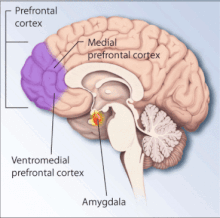Placement

Family-based foster care is generally preferred to other forms of out of home care. Foster care is intended to be a short-term solution until a permanent placement can be made. In most states, the primary objective is to reconcile children with the biological parents. However, if the parents are unable or unwilling to care for the child, then the first choice of adoptive parents is a relative such as an aunt, uncle or grandparent, known as kinship care. Most kinship care is done informally, without the involvement of a court or public organization. However, in the United States, formal kinship care is increasingly common. In 2012, a quarter of all children in formal foster care were placed with relatives instead of being placed into the system.
If no related family member is willing or able to adopt, the next preference is for the child to be adopted by the foster parents or by someone else involved in the child's life (such as a teacher or coach). This is to maintain continuity in the child's life. If neither above option are available, the child may be adopted by someone who is a stranger to the child.
If none of these options are viable, the plan for the minor may be to enter OPPLA (Other Planned Permanent Living Arrangement). This option allows the child to stay in custody of the state and the child can stay placed in a foster home, with a relative or a long-term care facility, such as a residential child care community or, for children with development disabilities, physical disabilities or mental disabilities, a treatment center.
671,000 children were served by the foster care system in the United States in 2015. "After declining more than 20 percent between FY 2006 and FY 2012 to a low of 397,000, the number of children in foster care on the last day of the fiscal year increased to 428,000 in FY 2015, with a slightly higher percent change from 2014 to 2015 (3.3%) than observed from 2013 to 2014 (3.2%)." Since FY 2012, the number of children in foster care at the end of each FY has steadily increased.
The median amount of time a child spent in foster care in the U.S. in 2015 was 13.5 months. That year, 74% of children spent less than two years in foster care, while 13% were in care for three or more years. Of the estimated 427,910 children in foster care on September 30, 2015: 43 percent were White, 24 percent were African-American, 21 percent were Hispanic (of any race), 10 percent were other races or multiracial, and 2 percent were unknown or unable to be determined.
Children may enter foster care voluntarily or involuntarily. Voluntary placement may occur when a biological parent or lawful guardian is unable to care for a child. Involuntary placement occurs when a child is removed from their biological parent or lawful guardian due to the risk or actual occurrence of physical or psychological harm. In the US, most children enter foster care due to neglect. If a biological parent or legal guardian is unwilling to care for a child, the child is deemed to be dependent and is placed under the care of the child protection agency. The policies regarding foster care as well as the criteria to be met in order to become a foster parent vary according to legal jurisdiction.
Especially egregious failures of child protective services often serve as a catalyst for increased removal of children from the homes of biological parents. An example is the brutal torture and murder of 17-month-old Peter Connelly, a British toddler who died in London Borough of Haringey, North London after suffering more than 50 severe injuries over an eight-month period, including eight broken ribs and a broken back. Throughout the period of time in which he was being tortured, he was repeatedly seen by Haringey Children's services and NHS health professionals. Haringey Children's services already failed ten years earlier in the case of Victoria Climbié. In the time since his death, in 2007, cases have reached a record rate in England surpassing 10,000 in the reporting year ending in March 2012.
Comments
Post a Comment